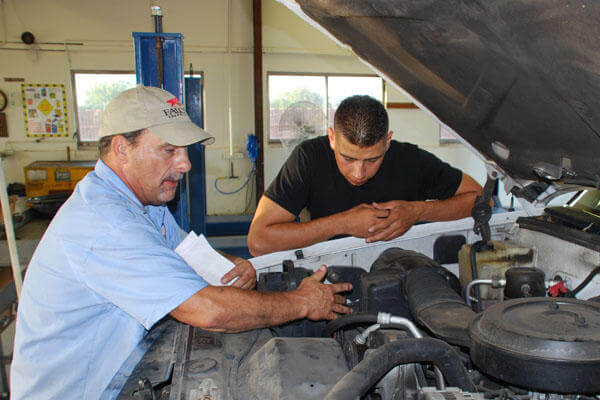The Fan
Air rushing through the radiator cools things off when you're driving merrily down the highway, but a fresh supply of air doesn't move through the radiator fins when the vehicle is standing still or crawling its way through heavy traffic. For this purpose, the fan is positioned so that it cools the liquid in the radiator (refer to Figure 11-1). Today, most fans have a plastic shroud that funnels air through the radiator. Some vehicles have air dams that help force the air up through the radiator from below.
Car Smarts: Originally, the fan operated in connection with the water pump, and they were both driven by a single fan belt that ran around a pulley connected to the alternator. This fan belt drove the fan as long as the engine was running. Almost all fans today are electric and thermostat-controlled, not hooked by belts to the engine or water pump. These fans only come on when they need to. Because the air rushing past them allows these fans to simply "coast" at high speeds, the engine doesn't have to work as hard or burn as much fuel to supply the power that the fans would normally consume.
Some vehicles now have two fans because styling changes that have lowered the profile of the hood area have caused radiators to get lower and longer, meaning that a single fan doesn't cover the entire surface. These two fans are sometimes run by electric thermostats that aren't connected to the water pump at all.
From Auto Repair for Dummies, copyright © 2009 by Wiley Publishing, Inc., Indianapolis, Indiana. Used by arrangement with John Wiley & Sons, Inc.










